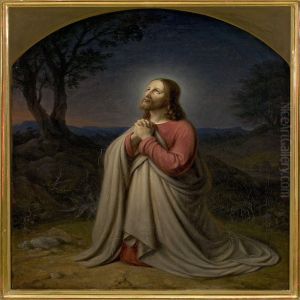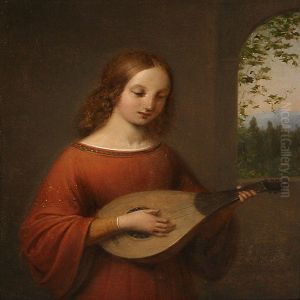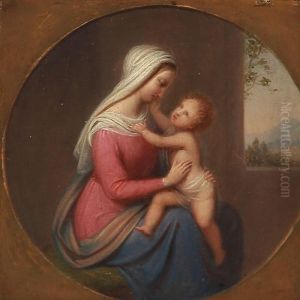Johan Ludvig G. Lund Paintings
Johan Ludvig Gebhard Lund was a Danish painter, born on October 16, 1777, in Kiel, in the Duchy of Holstein (then part of the Danish realm, now in Germany). Lund is primarily remembered for his significant contributions to Danish art in the early 19th century, particularly for his role in the development of the Danish Golden Age, a period marked by a unique style and vision that emerged in Denmark between the late 18th and mid-19th centuries, encompassing not only painting but also literature and architecture.
Lund was initially educated in the Danish Academy in Copenhagen, where he was heavily influenced by the neoclassical ideals prevalent at the time. His talent and dedication to his craft were recognized early on, and he was awarded several accolades and scholarships which allowed him to travel extensively across Europe. His travels took him to Paris and Rome, cities where he furthered his studies and was exposed to the vibrant art scenes, which significantly influenced his artistic development.
In Rome, Lund became a part of the Danish artists' colony, immersing himself in the study of classical art and the works of the Renaissance. This period was crucial for Lund, as it was during these years that he refined his style, focusing on historical and mythological subjects, which were popular among neoclassical artists. His works from this period are characterized by their detailed precision, balanced compositions, and a keen focus on human emotion and drama.
Upon his return to Denmark, Lund became a central figure in the Danish art scene. He was appointed professor at the Royal Danish Academy of Fine Arts in Copenhagen in 1810, a position he held with great distinction until his retirement. During his tenure, he influenced a generation of Danish artists, instilling in them the principles of neoclassicism and encouraging the exploration of national and historical themes. Lund's legacy is intertwined with the blossoming of the Danish Golden Age; he played a pivotal role in shaping the artistic identity of Denmark during this period.
Johan Ludvig Gebhard Lund passed away on March 3, 1867, in Copenhagen. His body of work continues to be celebrated for its contribution to Danish national identity and its pivotal role in the emergence of the Danish Golden Age. Lund's paintings can be found in the collections of major museums in Denmark and around the world, where they stand as testaments to his skill and his visionary approach to art.







